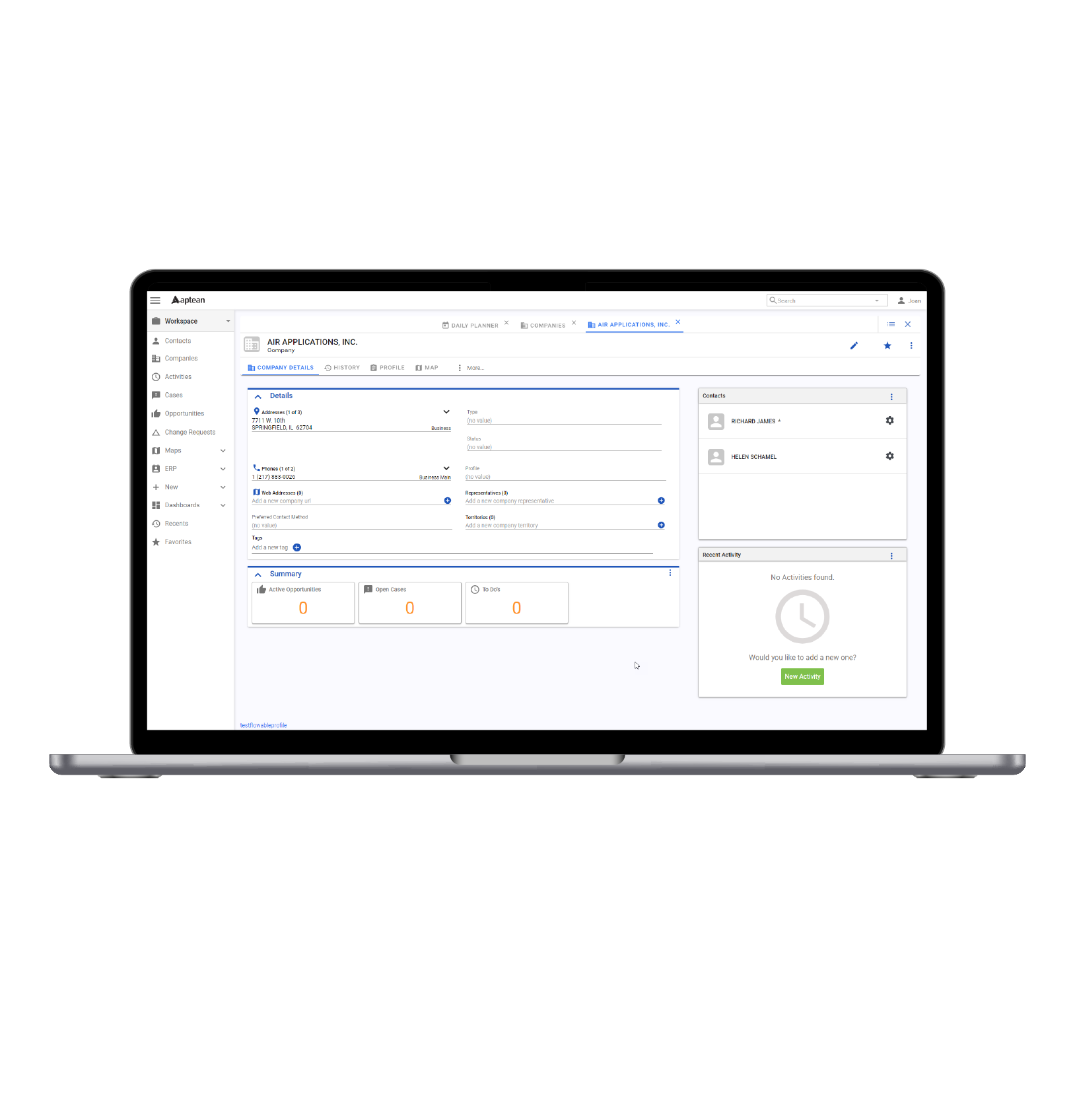Destacado en este post
Follow These 4 Steps for a Successful ERP Data Migration
Follow These 4 Steps for a Successful ERP Data Migration
27 Sept 2022
 John McCurdy | Senior Content Writer, Marketing
John McCurdy | Senior Content Writer, Marketing
What’s your business’s most valuable asset? For both manufacturers and distributors alike, inventory and staff are no doubt two of the critical resources you have, but a third that should certainly be included in the list is data.
The information you record and store—including that related to your supply chain, internal processes, finances, customers and more—is vitally important not only for your day-to-day operations but also your bottom line. That’s why you must preserve it, protect its integrity and ensure the means by which you access and update it are reliable and optimized for visibility and agility.
For those reasons, it can sometimes be necessary for companies to migrate their data from one system to another, especially if they’re engaging in the crucial initiative of digital transformation. More and more, modern organizations are choosing enterprise resource planning (ERP) technology as their foundation for the future, as these solutions provide a “single source of truth” for all of your employees that facilitates better decision-making.
Of course, if your business is looking to make the move to a fully modernized and industry-specific ERP platform, that will mean moving your data too. It may seem like a daunting step fraught with the potential for error, but the truth is that while it will take time and must be done carefully, it’s really quite possible to accomplish successfully.
The key is to follow these four steps and the accompanying best practices for ERP data migration. Read on to learn how to create a solid plan and execute upon it with confidence.
1. Determine the Scope
This is an important step to take before embarking on any project, but it’s especially critical for the migration of your data to an ERP system. First, establish the basics by determining the different sources from which you will pull data, whether that’s on-site servers, external drives or a different business solution that you’ve utilized in the past.
Make sure to include your master data—that which is most essential to your operations and defines your products and processes—as well as historical and live transactional data. However, don’t feel obliged to migrate everything and instead be selective, carefully scrutinizing the information you have to determine its utility and value going forward.
Involve all of your key stakeholders in your efforts, as they will know what data is most relevant to their role and what absolutely must be preserved. Also, be sure to get an understanding of the different formats that your data is currently in, as that will inform your strategy as you move through the next several steps.
Finally, know that a good data migration strategy focuses on working systematically and methodically, and you should avoid moving too quickly for the sake of making progress. Build in contingency plans in case things don’t work out quite how you planned, and be flexible while still clearly delegating responsibilities and promoting accountability.
2. Create a Data Migration Team
You need to have the right people on an initiative that’s this critical, so assess your current personnel for their fit to the task and make sure they’re involved, if not in positions of leadership. Those who already have knowledge of ERP data migration best practices should of course be prioritized, and if no one on staff fits that bill, you might consider hiring someone for the purpose.
The members of your data migration team should have in-depth experience in not just your general industry, but also your company’s unique and highly specialized processes—not to mention the facts and figures that are generated and collected in the course of operations. That means you’ll need a mix of individuals, some who work on the shop floor and others who specialize in information technology.
Also keep in mind that this team will be working closely with those of your ERP provider, and assuming that you’ve chosen a vendor who knows both your market and the data migration process well, you should encourage your people to rely on their expertise. Aptean is proud to act as a partner in this way, guiding our clients’ ERP implementations and providing advice to produce better outcomes.
3. Define the Standards
Depending on whether you’re moving your data from written records, digital spreadsheets, legacy systems or an older ERP, this step will entail “translating” the information there to a uniform format that your new ERP solution can accept. Your approach in this effort—which is known as data mapping—will of course need to be based on how your material is currently classified and categorized, so ensure that your team is familiar with the different methods and setups of your various departments.
Before you begin to map, though, it’s worth taking the time to review what information you have, assess its viability and whittle the aggregate down to what’s most crucial going forward. Obviously, redundant data can typically be discarded, and you should also keep an eye out for incorrect or corrupt data that may linger in your old database.
In the process of data mapping, you’ll need to compare your source data and its associated fields and determine how it lines up with your ERP’s target data (otherwise known as mapped data). You should establish rules for how the information is translated, and while those will vary depending on what you’re pulling from and may require field-by-field analysis, this is not a part of the process that you can afford to rush or forego.
4. Test, Validate, Cleanse and Reconcile
Begin by testing your data migration procedure with small batches and sample sets to see how your strategy plays out in practice, and revise according to the results. You can gradually ramp up in the amount of data you migrate at once, but make sure your team takes the time to validate each batch, identify errors and rectify issues before they result in larger problems.
You may find that you can do additional data cleansing at this time, as it can happen that only in the migration process does it become apparent that historical data either won’t fit into the parameters of your ERP solution or is otherwise made invalid by the process. The information can still be retained and archived for inquiry, but it may not need to make the move into your new system.
Depending upon the industry and/or region in which your business operates, this will also be a good time to scrutinize the end state of your data for compliance with any regulations. In particular, the General Data Protection Regulation (GDPR) and Health Insurance Portability and Accountability Act (HIPAA) have implications regarding consumer information.
Aptean’s implementation teams work with our clients and assist in validating data, optimizing your configuration and iterating until we’ve reached your desired process outcome. We’re dedicated to keeping your digital transformation headed in the right direction, so we take a hands-on approach at this step to maximize the chances that the data migration process goes smoothly.
Get the Edge that Aptean Offers
As a trusted and leading name in ERP software, our company and the solutions we offer come with distinct advantages over other options on the market. First, there’s the fact that we offer specialized systems based on the industries we serve—we don’t think you should have to settle for a “cookie cutter” or “one size fits all” system.
We’re also experts on the ERP implementation process, including these steps briefly outlined for a successful data migration, and provide best practice advice throughout the journey. Aptean’s dedicated professionals want you to maximize the return on investment (ROI) that you get from your system, as we recognize it is a significant investment of both time and finances.
So whether you’re looking for an ERP platform for the food and beverage; process manufacturing; industrial manufacturing; apparel; or distribution and retail market, we think Aptean should be at the top of your list of potential providers. Contact us today to learn more about our purpose-built offerings, their powerful features and the benefits they offer.
You can also request a personalized demo at your convenience.
¿Todo listo para transformar tu negocio?
Tenemos las soluciones ERP especializadas que necesitas para superar los desafíos de tu sector.



